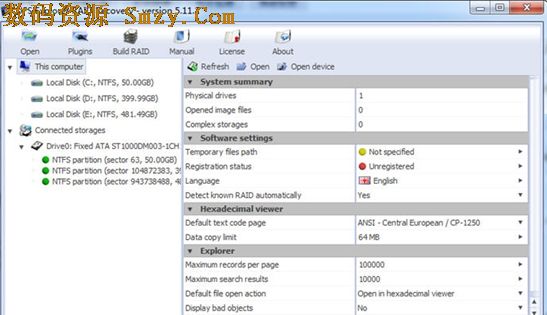

- 0 0 REPORT UFS EXPLORER PROFESSIONAL RECOVERY ANDROID
- 0 0 REPORT UFS EXPLORER PROFESSIONAL RECOVERY VERIFICATION
This article builds upon emerging work on the geographies of sleep by turning to the sleep-hopeful body. The most frequently observed defects were related to the damage of PCB's pads not to the structure of active components. The memory test results show that active components are much more temperature resistant than what is stated in the datasheets provided by the manufacturer.
0 0 REPORT UFS EXPLORER PROFESSIONAL RECOVERY VERIFICATION
Additional verification after desoldering and remanufacturing of components has been performed by "sustainablySMART" project partner-Blancco Technology Group (herein after referred as to "Blancco"). The functionality of components after each thermal process has been checked right away. From 1 to 12 cycles of thermal exposures (reflow processes) have been applied to conduct thorough assessment of BGA components. Special test PCBA has been designed to verify temperature resistance of active components such as memories and controllers. This article presents the results of research aimed to evaluate temperature resistance of memory BGA components during different multi-reflow processes which are needed for desoldering and remanufacturing processes of BGA components in Circular Economy applications. This means that over 770 million devices, that are currently circulating in the secondhand market, may still store previous owners' sensitive information, which represents serious security risk.
0 0 REPORT UFS EXPLORER PROFESSIONAL RECOVERY ANDROID
The magnitude of failing Factory Reset data sanitization is huge and despite the improvements the number of Android smartphones that may not properly sanitize the storage has grown by over 50% between 20. Considering the share of smartphones running on Android Lollipop and below, over one third of Android devices (from Lollipop (5.0) and earlier) are vulnerable to improper storage sanitization. However, default erasure process is still failing to irretrievably erase the data, which allowed us to retrieve the user data directly from the NAND flash bypassing the controller. The results show that Android Factory Reset logical sanitization has generally improved making user data more difficult to recover. In addition, we have evaluated the robustness of in-built Android sanitization against attacks of different degree of sophistication including chip-level data read on one of the best-selling smartphones in history Samsung Galaxy S4 (80 Million units). Our study has brought this line of research to the new level and investigated the changes of Factory Reset effectiveness over the past years. However, despite frequent updates of Android OS, there was no further research conducted to reexamine Factory Reset reliability on newer devices and OSes. The study proved that default erasure process is failing to securely sanitize the storage on Android versions from Gingerbread to Jelly Bean (v.2.3-4.3). That has been the first comprehensive study and probably one of the most recognized works on evaluation of Android Factory Reset performance. Factory Reset, being default data wipe solution offered by Android, has already been challenged by researchers from University of Cambridge back in 2015. Data security on disposed devices is one of the key enablers for device lifetime extension and, consequently, for making electronics more sustainable. The data extraction method, along with experimental data recovery evaluation, will be explored in this paper.Ĭonsidering the amount of data stored on smartphones, it is critical that none of the user information is retrievable in case of device resell or disposition. In some models, more than 99% of the securely erased data can still be recoverable by accessing the flash memory inside the MMCs and accessing the internal flash memory, we discover that securely erased data is still recoverable from the internal flash memory. MMCs, and evaluate advanced data recovery procedures.


However, its secure data purging features, such as Secure Erase and Sanitize, make data recovery from Its standardized structure and protocol makes forensic physical data acquisition simpler than handling the raw flash memory. MMC, which consists of flash memory and the flash memory controller, optimizes the data input/output between the host device and the non-volatile memory through its standardized protocol. MMC is one of the “managed” flash memory devices that are popularly used in modern digital devices as their storage media. In this paper, we explore the data recovery procedures from


 0 kommentar(er)
0 kommentar(er)
